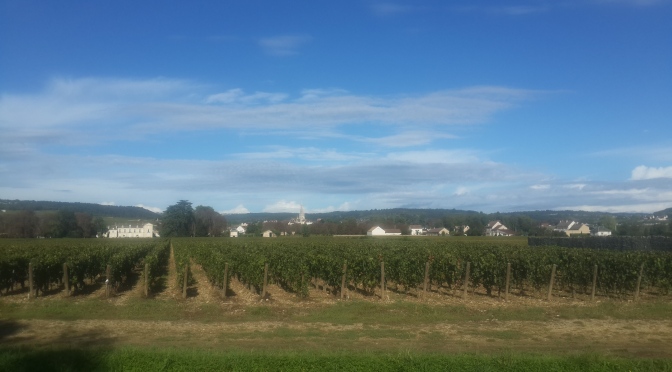It is another glorious day in Burgundy’s Cote d’Or! Yesterday’s clouds and foggy morning gave way to clearing blue skies by 2pm, which continue today with low humidity and lovely temperatures (midday: 17°C, 63°F). A line of clouds should be rolling in from the northwest later today, but the forecast is for continued splendid weather through most of next week. This continued Indian summer is making everyone smile. (Yes, the French use the phrase too, eté indien) Just for the sake of contrast, here is what the same view from above looked like yesterday morning, and indeed for much of rainy July and early August:
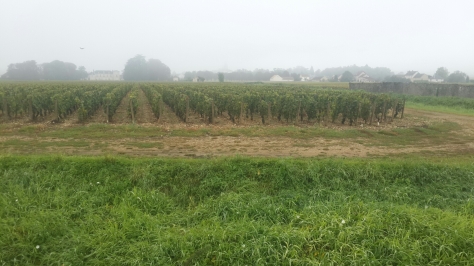
Almost all of the white wine grapes are now in the producers’ cellars. There are some parcels of Puligny and Meursault 1ers Crus whose ripening has been delayed by the hailstorm of June 28th, but plans are to pick those early next week. The white grapes were nearly uniformly clean, ripe, and, except for some hail damage where shriveled berries quickly dried and fell off the vine, showing no signs of significant rot or botrytis. For most growers the white grapes went straight to the pressoirs, there was little need for any triage.
Potential alcohol levels varied between 12.3° and 13.5°, and the fruit and juice that I have tasted has a wonderful sweetness, complemented by brilliant, tightly wound acidity. These will be classic white Burgundy wines, with chaptalisation rarely necessary, and if practiced, only to bring the wines up in alcohol a half to at most one degree. Fermentations are proceeding very rapidly in the cellars, as a healthy crop also brought in healthy and copious yeast populations on the fruit. The INAO has set the maximum yields for regional and villages white Burgundies at 60 hectoliters per hectare this year, and except for the hail-ravaged 1ers Crus in Meursault and Puligny, and some other plots of very old vines, this should be a fine vintage for quality wines with enough quantity to replenish stocks in the marketplace.
One of my neighbors in Puligny, Francois Carillon, reported that his alcoholic fermentations began almost immediately after debourbage (the settling of the juice’s gross lees), and took only a week to complete after the must was transferred to barrel. His Bourgogne Blanc and Puligny villages yields were in the range of 50 hectoliters per hectare. At Domaine Michel Niellon, Michel Coutoux was very happy with the quality and quantities of his Chassagnes from villages as well as 1ers and Grands Crus levels. Potential alcohol at harvest was between 12.5° and 13.2°, and the vats were bubbling away when I visited Saturday morning the 20th September.
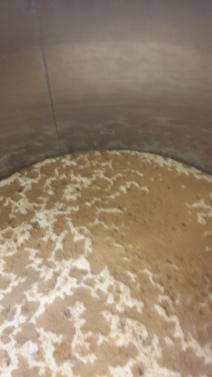

Most growers transfer their juice from vat into barrels when the fermentation begins, and that process is now underway in most white wine producing cellars throughout the Cote de Beaune.

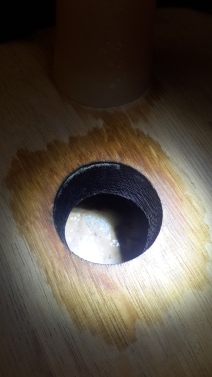
Laurent Pillot finished his harvest on Friday afternoon, bringing in the Aligote adjacent to his cuverie at the bottom of the village near the RN6/74 interchange. He and his son were just finishing cleaning tanks after debourbage, and transferring the must to barrels for fermentation.

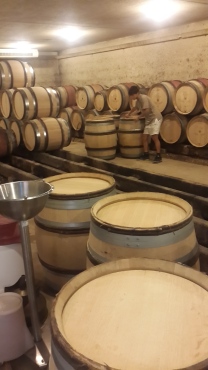
As I mentioned earlier, the latest parcels to be picked seem to be those most impacted by the hailstorm at the end of June, as well as the higher slopes of Puligny, Blagny, and Meursault where cooler temperatures usually mean a later harvest. More on these wines in a later post.
The Pinot Noir harvest is in full swing as I write this post, with most of the Cote de Beaune reds in the cellars, and in the Cote de Nuits, most grapes are being brought in under superb conditions. Many of the producers of the Cote de Nuits’ illustrious Grands Crus will wait to bring in their fruit next week, under what is forecast as continued near-perfect weather. As of yesterday, I saw some fruit remaining in Corton, the upper slopes of Aloxe-Corton and Ladoix Grands Crus parcels, and quite a few parcels waiting to be picked in Vosne, Morey, and Gevrey Grands Crus. For the most part, the harvest of reds in Volnay, Pommard, and Beaune has finished, with spectacular fruit brought in, just not much of it. The 1ers Crus and much of the villages parcels in these communes were severely impacted by the hailstorms, and yields will be down significantly. Some growers report parcels that produced only 5 hl/h. The quality is beautiful, but the quantities will be miserly.

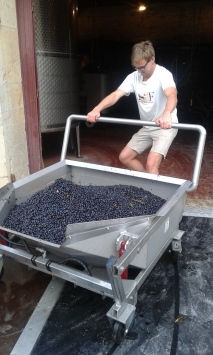
Guillaume d’Angerville estimates that in the last 5 years (2010 to 2014 vintages) he has produced the equivalent of only two average crops. The quality of 2014 is superb, with little rot and very little damage from vinegar flies in the Cote de Beaune. But there will be little wine to sell from the 2014 vintage.
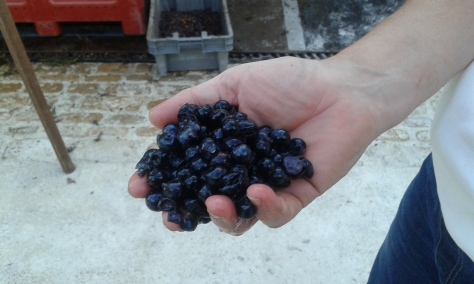
There has been widespread talk, and a bit of quiet fear, of a new pest that has arrived in the Pinot Noir vineyards of Burgundy. I have heard a lot of discussion about drosophila suzukii, the invasive species of fruit fly that has been found in several vineyards. The flies thrive in heat and humidity, particularly in places where the air is stagnant, without much wind. The flies puncture the ripening fruit, introducing a vinegar yeast to the bunch, and can decimate surrounding vines quite rapidly, turning wine grapes to vinegar juice.
For many growers, 2014 marks the first year of this new pest, and I heard varying comments on its presence, effects, and vectors. Everyone agrees that the issue is localized in small parcels this year, mainly in the Cote de Nuits, but reported to be quite problematic in the Cote Chalonaise as well. Many maintain that heat, insufficient ventilation, and humidity are causes, and point to parcels where leaves were not pulled from the fruit before harvest, especially in the lower, frequently wetter areas. Others claim to have no problems whatsoever, due to the sanitary conditions of their organic and sometimes biodynamic plots. The highest estimates of the effects of the vinegar fly that I have heard are that 3 to 5% of the fruit was affected in the Cote de Nuits. Pickers and sorters have been extremely vigilant this year, sniffing boxes and bunches for the telltale vinegar aromas, and even where the fruit arrives in beautiful condition, extra care and time are being taken on the tables de triage.

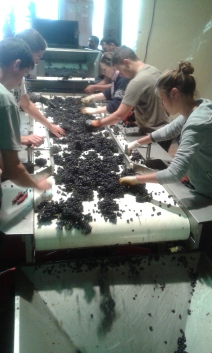
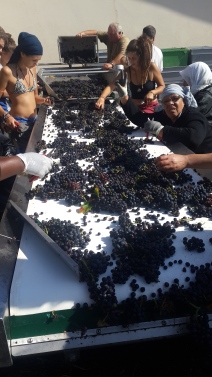
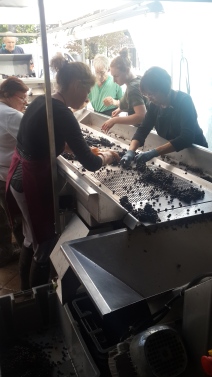
Most growers with whom I spoke did agree to one thing: that drosophila suzukii has indeed arrived in Burgundy, and that it will become another significant issue that will require vigilant attention in the vines for the coming years.
The next several days will complete the harvest in the Cote d’Or vineyards for 2014. Growers will continue their work as the wines begin to take shape and reveal their personalities. But confidence is high that a quality vintage is being produced in 2014.
